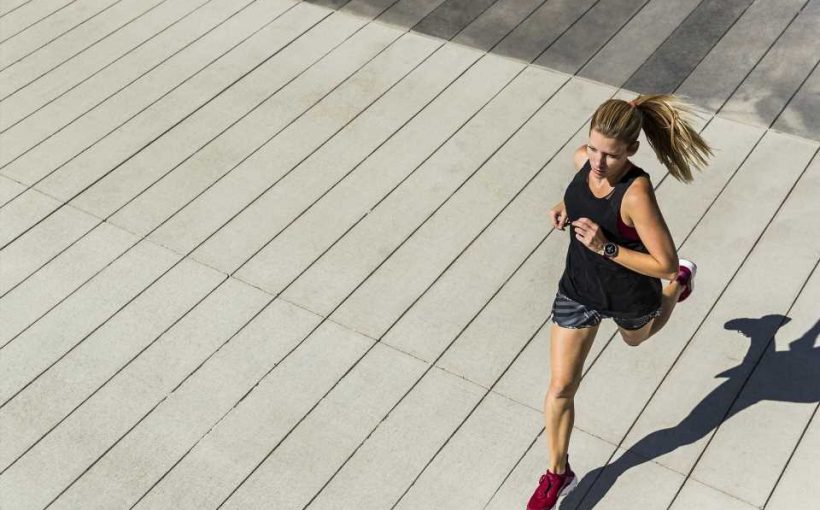
The idea that a leaner body makes for a faster stride is common among distance runners. But it’s inaccurate and sets a dangerous ideal, according to Megan Roche, MD, Ph.D., an ultrarunner and researcher at Stanford Medicine.
Runners who are excessively lean are prone to injuries, infectious diseases, mental health problems and loss in bone density, said Michael Fredericson, MD, a professor of orthopaedic surgery who has served for decades as the Stanford University track team head physician. Female runners are more likely to suffer these effects, he noted.
During his career as the head team physician, Fredericson has seen so many athletes with problems related to low body weight—including bone stress injuries, menstrual irregularity and osteoporosis, or loss of bone density—he decided to study ways to prevent it.
Collaborating with researchers at the University of California, Los Angeles, another NCAA Division I school, they studied female distance runners before and after they received counseling on eating habits and maintaining a healthy weight. Post-counseling, athletes at Stanford University saw a 50% reduction in the number of bone stress injuries while the number of athletes who had regular menstruation—a harbinger of stable health—doubled.
As for their running times? “Those athletes who regained their menstrual cycle and gained more bone density had stronger athletic performance,” Roche said.
Dietary education
The researchers began their study with 56 female collegiate runners who competed in races of 800 meters or longer. They tracked the number of bone stress injuries—painful damage to the bone—suffered by the athletes. When severe, such injuries can lead to career-threatening stress fractures.
The athletes underwent four years of training on the importance of caloric intake and achieving a balance of nutrients from proteins, fats, Vitamin D and calcium. Once a year, a dietician gave the runners a presentation on the importance of proper nutrition. In addition, a dietician met with each athlete to discuss her eating plan. Those athletes who were at highest risk of developing problems because of inadequate nutrition, lack of menstruation or injuries met with the dietician at least once a month, while those who were at lowest risk had one meeting a year.
The study concluded in 2020 with 78 runners, 34 at Stanford University and 44 at UCLA, and the results, at least at Stanford University, were encouraging. The research was published in BMJ Open Sport & Exercise Medicine and Fredericson was the principal investigator, Roche was a lead author.
“By the end of the four years, it was fairly dramatic,” said Fredericson, who directs the Physical Medicine and Rehabilitation Sports Medicine service at Stanford Medicine. “We saw pretty conclusively that their bone density was improving and the bone stress injury rate significantly decreased.” The researchers also saw that, of the runners who were not menstruating, about half regained their periods over the course of the intervention. Excessive weight loss will lead to amenorrhea, or lack of menstruation.
Fredericson and Roche said they found that for the regimen to be successful, the team’s outlook on nutrition and weight needed to change. “They have to dispel the myth that leaner is faster,” Roche said.
At Stanford University, where the coaching staff and the dietician were consistent throughout the study, “They really bought into changing the team culture,” Fredericson said. “The women’s distance coach was buying them nutrition books, for example.”
At UCLA, where staff turned over among the coaches and dieticians—and where bone stress injuries were initially less of a problem than at Stanford University—the runners did not experience significantly fewer bone stress injuries.
Not just a female problem
Fredericson emphasized that osteoporosis and bone stress injuries can affect male athletes as well. He’s not sure why it’s more common among female athletes—perhaps because men have higher bone density, he said. It could also be that testosterone has a protective effect.
Still, he said, “I’ve had a couple male athletes who had such severe consequences they had to retire. It can be serious in men; you just don’t see it as often.”
What they learned from the study applies to all athletes, whatever their age or sex, the researchers said. Their advice:
- Eat enough to maintain a healthy weight.
- Replenish within 30 minutes after a workout.
- Consume frequent meals throughout the day.
- Don’t shy away from healthy, plant-derived fats.
- Be sure to get enough calcium and Vitamin D for bone strength.
“Your strongest self is your fastest self,” Roche said.
More information:
Michael Fredericson et al, Healthy Runner Project: a 7-year, multisite nutrition education intervention to reduce bone stress injury incidence in collegiate distance runners, BMJ Open Sport & Exercise Medicine (2023). DOI: 10.1136/bmjsem-2023-001545
Journal information:
BMJ Open Sport & Exercise Medicine
Source: Read Full Article
